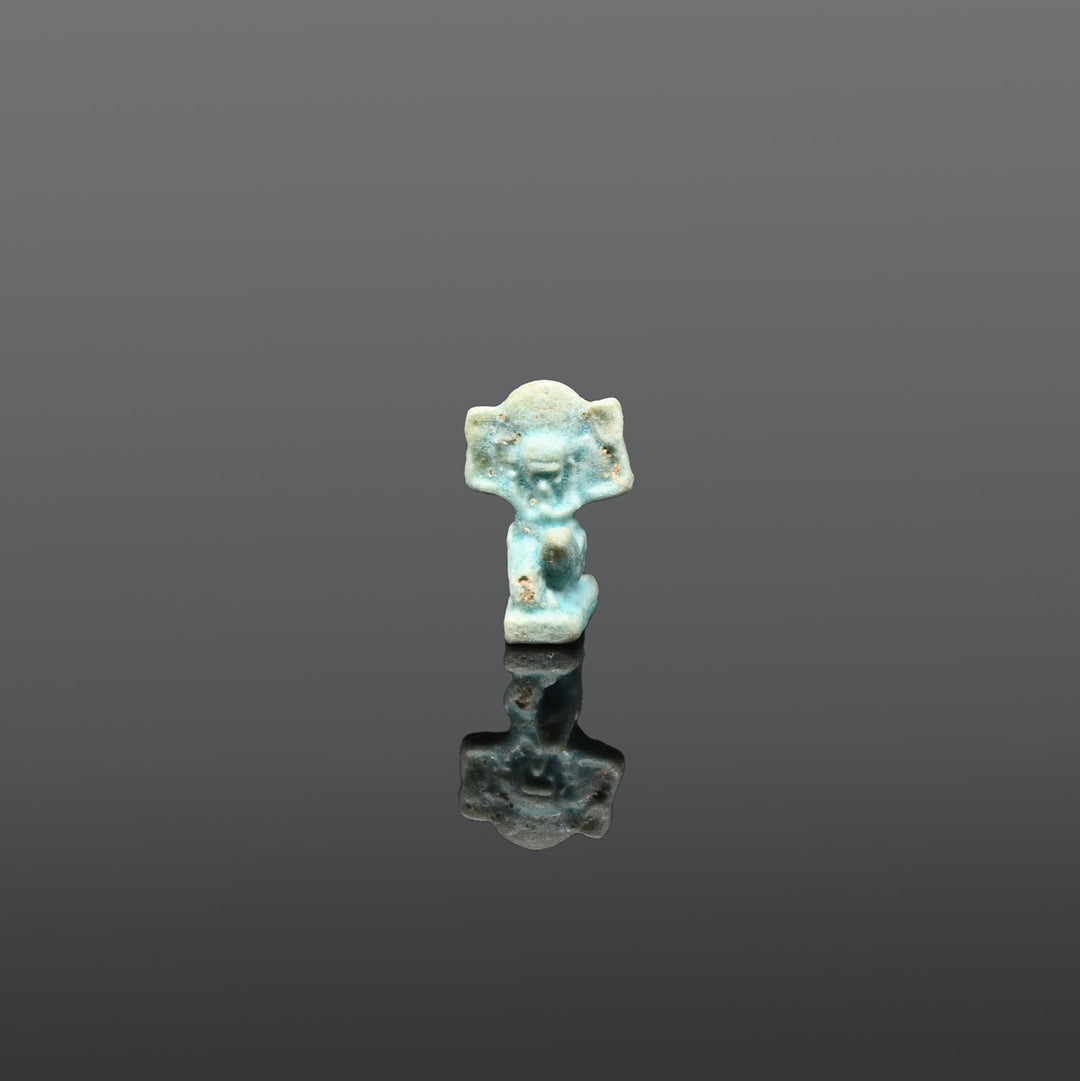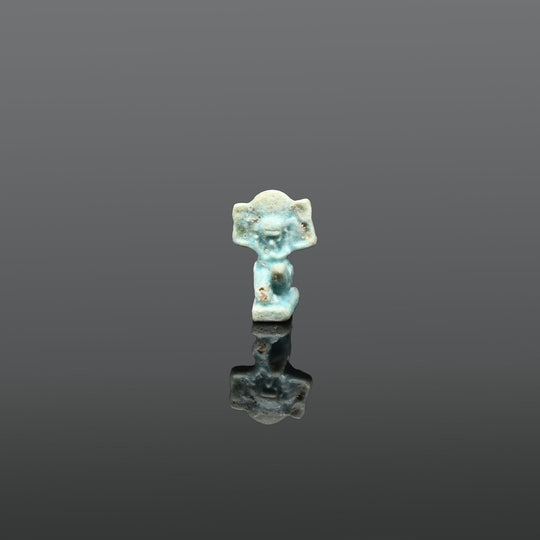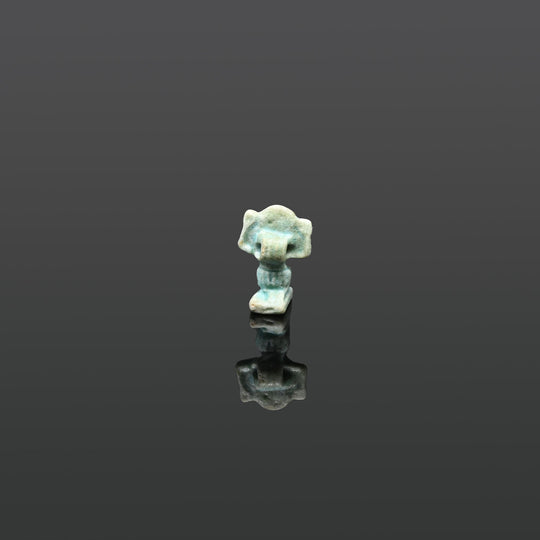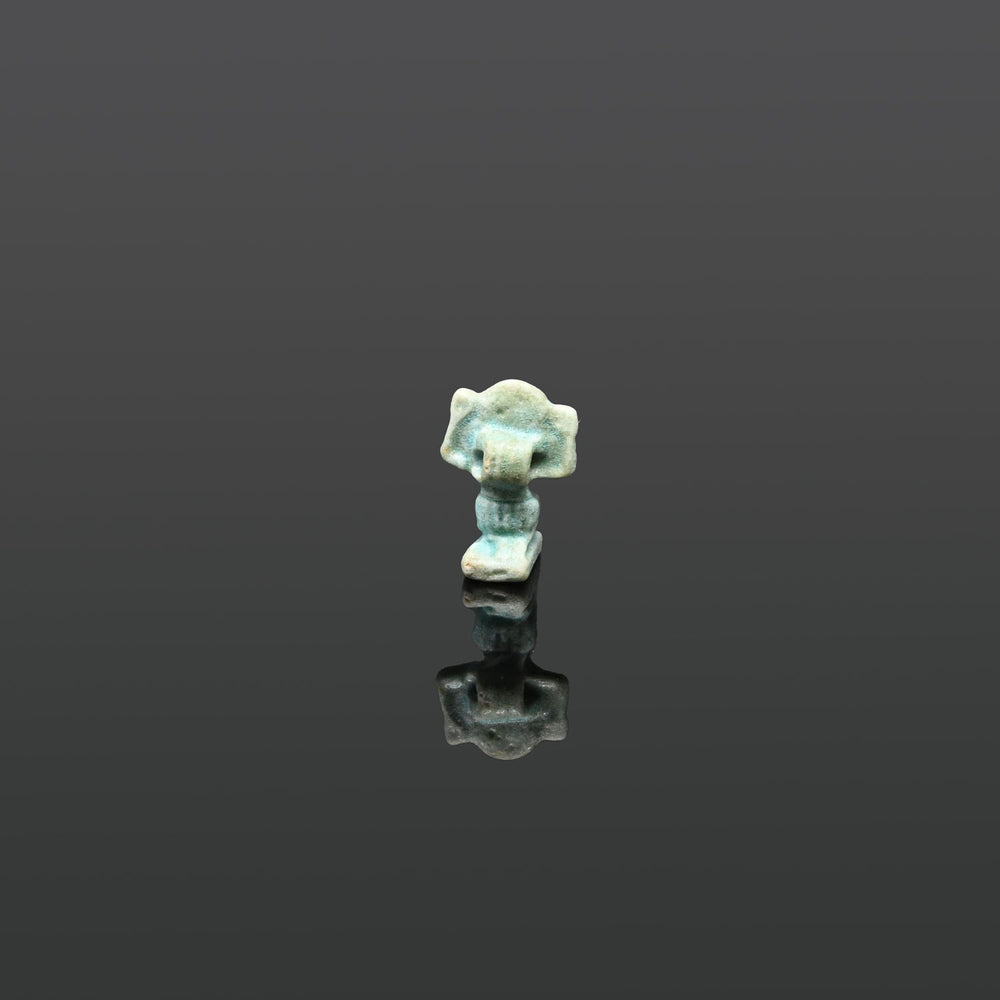An Egyptian Faience Amulet of Shu, Late Period, Dynasty 26, ca. 664 - 525 BCE
EA2357
- This object qualifies for free USA shipping and a flat rate fee of $60 if shipping internationally.
Shu, the son of the creator and sun god in the Heliopolitan creation myth, represents the principle of air. Together with his consort, Tefnut- the principle of moisture, as well as Geb (earth) and Nut (sky), he was one of the first deities. Shu was responsible for separating Geb and Nut and securing the space of the universe; therefore he also represented the life principle. Amulets of Shu became popular in the Late Period.
This blue-green glazed faience amulet represents Shu in his standardized form. He is shown kneeling on his right knee with his left knee drawn up. Both arms are raised (to lift up the sky), and he wears a long wig and a pleated shendyt. The integrated pillar at the back has a suspension loop for attachment.
Condition: Intact and in very good condition overall
Dimensions: Height: 5/8 inch (1.5 cm)
Provenance: Private Maryland collection of a diplomat, acquired while serving in Egypt between 1949 and 1956, and then by descent.
Sands of Time provides a lifetime, unconditional guarantee of authenticity and provenance. Every object you purchase from us is accompanied by a Certificate of Authenticity, stating culture, provenance, and age.
Furthermore, we conduct due diligence to ensure the item, to the best of our knowledge, has not been illegally obtained from an excavation, architectural monument, public institution, or private property. Wherever possible, reference is made to existing collections or publications.Wherever possible, reference is made to existing collections or publications.
We ship Tuesday to Friday with FedEx and usually same day if your order is received before 2pm. Within the continental USA, packing, shipping and insurance is free. Depending on size and destination, delivery times range from one to five business days.
For overseas shipments we charge a small flat rate which includes packing, preparation of all customs paperwork, insurance and carrier fees in compliance with all USA and International customs requirements. Overseas shipments are sent using either USPS Priority Mail or FedEx but contact us if you have a shipping preference. International customers are responsible for all duties and taxes.










